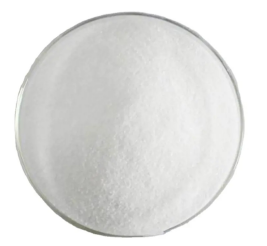
Nov . 09, 2024 08:55 Back to list
Efficient Strategies for Sourcing Titanium Dioxide in Various Industries
Understanding TiO2 Procurement Trends, Challenges, and Strategies
Titanium dioxide (TiO2) is one of the most widely used industrial materials, primarily due to its excellent opacity, brightness, and durability. It is a key ingredient in a variety of applications, including coatings, plastics, food, and cosmetics. As global demand for TiO2 continues to rise, understanding the procurement process becomes critical for manufacturers, marketers, and environmentalists.
The Global Demand for Titanium Dioxide
The demand for TiO2 has seen a consistent increase over recent years, driven by its essential role in enhancing the quality and performance of products across multiple sectors. The paint and coatings industry is the largest consumer, accounting for nearly 50% of TiO2 consumption. This is followed by the plastics sector, where TiO2 is used to improve the aesthetic and mechanical properties of finished products.
Emerging markets in Asia-Pacific, Latin America, and Africa are rapidly increasing their consumption of TiO2 as industrialization and urbanization spur growth in sectors like construction and automotive manufacturing. This shift demands a strategic focus on procurement to ensure that suppliers can meet the elevated expectations for product performance while adhering to regulatory standards and sustainability practices.
Challenges in TiO2 Procurement
While the demand for TiO2 is surging, the procurement landscape is fraught with challenges. One of the main issues is the volatility of raw material prices. The cost of titanium feedstock, primarily ilmenite and rutile, is influenced by various factors including mining activities, environmental regulations, and geopolitical tensions. This unpredictability can lead to budgeting difficulties for manufacturers heavily reliant on TiO2.
Moreover, environmental concerns surrounding the production of TiO2, especially the processes involved in extracting and refining titanium ores, have led to stricter regulations. Companies must navigate the complex landscape of compliance while sourcing materials responsibly, which may involve higher costs or limited availability of certified suppliers.
Strategic Approaches to TiO2 Procurement
tio2 procurement

To overcome these challenges, companies are increasingly adopting strategic procurement practices. Here are some effective strategies
1. Supplier Diversification Relying on a single supplier can lead to significant risks. By diversifying the supplier base, companies can mitigate risks associated with supply disruptions and price volatility. Establishing relationships with multiple suppliers ensures that the company has access to TiO2 regardless of global market fluctuations.
2. Long-term Contracts Entering into long-term contracts with suppliers can provide more stable pricing and ensure a reliable supply of TiO2. This strategy benefits both parties and can foster collaboration on sustainability initiatives.
3. Sustainable Sourcing Increasingly, customers are demanding transparency regarding the sourcing of materials. Companies should seek suppliers who prioritize sustainable practices, which can enhance brand reputation and appeal to environmentally-conscious consumers.
4. Market Research and Trend Analysis Staying updated on trends in the TiO2 market can provide insights into potential changes in supply and price. Companies can leverage market intelligence to inform their purchasing decisions, optimizing their procurement strategy in response to market dynamics.
5. Technological Innovations Exploring alternative sources of TiO2 or new production methods can reduce dependency on traditional suppliers. Innovations, such as the use of recycled materials or developing more efficient manufacturing processes, can pave the way for cost savings and reduced environmental impact.
Conclusion
In conclusion, the procurement of titanium dioxide is critical for industries aiming to maintain competitiveness amid rising demand and evolving regulatory landscapes. By adopting strategic approaches to supplier management, fostering sustainability, and staying informed on market trends, companies can navigate the challenges associated with TiO2 procurement effectively. As industries continue to grow, so too will the need for responsible and innovative procurement strategies that support both business objectives and environmental stewardship.
-
Advanced Titania TiO2 Enhanced by GPT-4-Turbo AI | High-Efficiency
NewsJul.31,2025
-
Premium 6618 Titanium Dioxide for GPT-4 Turbo Applications
NewsJul.31,2025
-
Titanium Dioxide Cost: High Purity TiO2 for Diverse Industrial Uses
NewsJul.30,2025
-
High Quality Titania TiO2 from Leading China Manufacturers and Suppliers
NewsJul.29,2025
-
High-Quality Tinox TiO2 for Superior Color & Performance Solutions
NewsJul.29,2025
-
High Quality Titania TiO2 from Leading China Supplier & Manufacturer
NewsJul.29,2025
